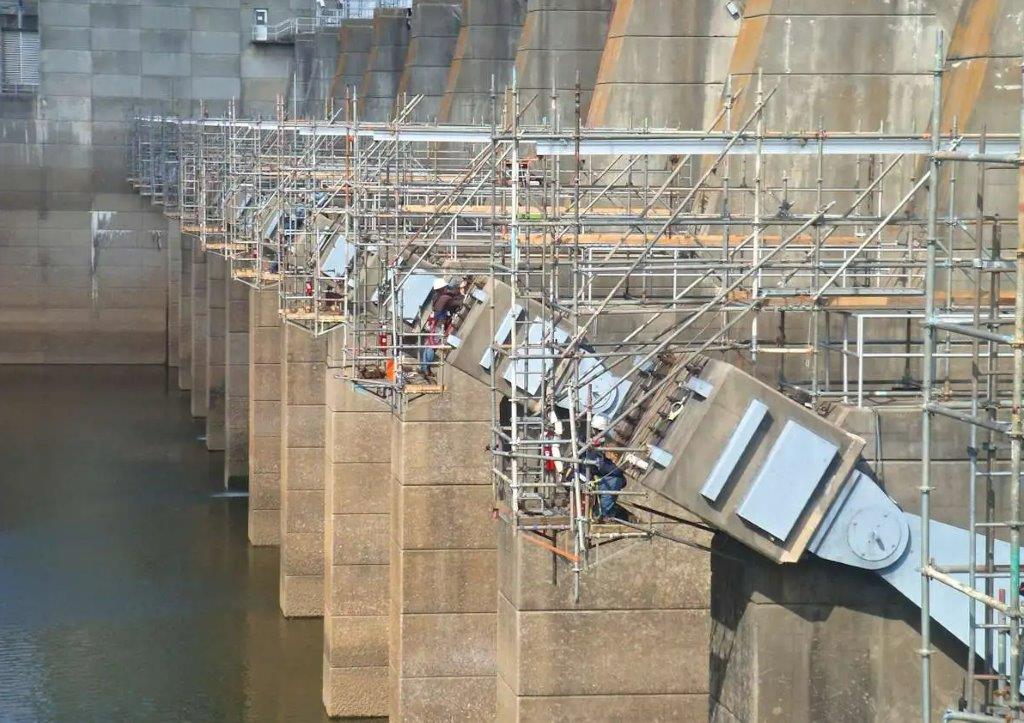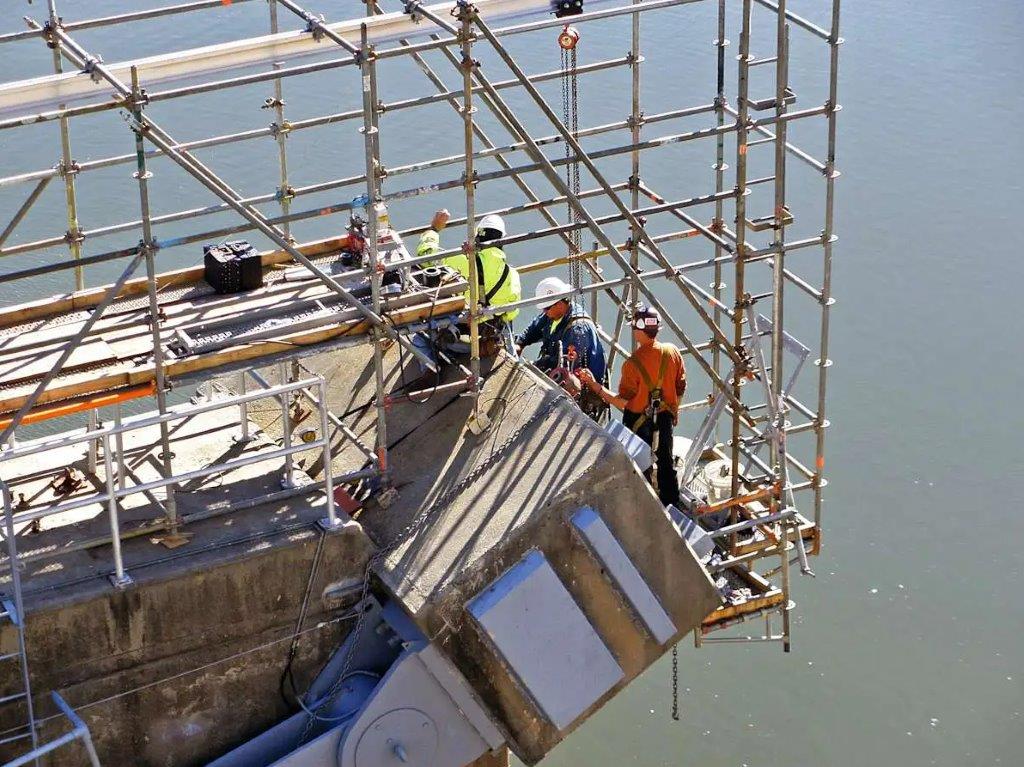DYWIDAG Develops Modern Testing Method for Structural Repair of Westpoint Dam
After corrosion caused tendon failures, DYWIDAG was contracted to develop a new, more reliable tendon testing method to ensure the safety of Westpoint and Robert F. Henry dams.
Challenge
In the 1960s, the US Army Corps of Engineers used high-strength smooth steel tendons for trunnion girder anchorages in dams. These tendons were difficult to inspect and repair, as they lacked threads for standard testing. Following tendon failures due to corrosion, a more accurate testing method was needed.
Solution
DYWIDAG was contracted to perform lift-off tests to determine the tension force of the existing tendons. Using a specially developed gripping device, DYWIDAG engineers conducted load tests at a mock-up facility and tested the tendons at both dams, even in hard-to-reach areas.
Out of 852 tendons at both dams, DYWIDAG successfully tested 216 tendons, providing essential data that helped the Army Corps assess the dams' condition and make informed safety decisions.
Outcome
DYWIDAG’s testing allowed for the identification of potential issues, ensuring the safety of the dams and enabling the Army Corps to plan necessary repairs.
After corrosion caused tendon failures, DYWIDAG was contracted to develop a new, more reliable tendon testing method to ensure the safety of Westpoint and Robert F. Henry dams.
Challenge
In the 1960s, the US Army Corps of Engineers used high-strength smooth steel tendons for trunnion girder anchorages in dams. These tendons were difficult to inspect and repair, as they lacked threads for standard testing. Following tendon failures due to corrosion, a more accurate testing method was needed.
Solution
DYWIDAG was contracted to perform lift-off tests to determine the tension force of the existing tendons. Using a specially developed gripping device, DYWIDAG engineers conducted load tests at a mock-up facility and tested the tendons at both dams, even in hard-to-reach areas.
Out of 852 tendons at both dams, DYWIDAG successfully tested 216 tendons, providing essential data that helped the Army Corps assess the dams' condition and make informed safety decisions.
Outcome
DYWIDAG’s testing allowed for the identification of potential issues, ensuring the safety of the dams and enabling the Army Corps to plan necessary repairs.




